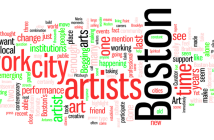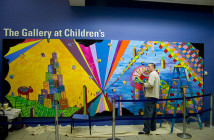Every piece published on Big RED and Shiny is an essay in some form or another. The following is an attempt, an ‘essay’ if you will, to describe the essay.
Essays are the best devices for communicating ideas.
There is no other form of composition better suited for the transfer of opinion or knowledge, whether true, false or merely perceived.
An ironic quality of the essay, and probably its second most significant quality, is the fact that it is undefinable. Billions of essays are created every year that serve the purpose of defining or describing something, but any interpretation of the meaning of “essay” remains broad and nebulous. Despite its standing as the number one mechanism of communication for any pedagogical undertaking, no individual has ever succinctly characterized the essay, if for the only reason that each one of the writers who has come remotely close to a definition is competing with every author who has ever executed an essay. Many well known essayists have toiled away at the page hoping to elucidate to us - and to themselves, for that matter - what an essay is.
Every blog post is an essay in addition to every newspaper column or editorial. Every art review is also an essay. Articles which lack narrative, whether found in scholarly journals or newspapers, are also essays. The easiest differentiation between an essay and a non-essay may be the presence of a narrative, but essays can, in fact, have a plot. Additionally, essays do not need to be based in language. They can appear as sound (music, spoken word, noise), images (photography, painting, drawing) or have sculptural or overt temporal qualities (cinema, television, theatre).
We all think in language. Written essays are the most precise methods for the expressions of our ideas, yet authors in search of a particular emotional or aesthetical approach may delve into mediums beyond the written word. Photography may be used because it represents the real better than modes of visual communication, but painting could be used because it can represent the ideal more adequately than other mediums.
There are an impossible-to-count number of methods by which one may undertake the essay, but its resistance to classification makes it the perfect tool for any attempt at expression. Consider, of all things, the pick-up: the attempt to attain the courtesies of a potential romantic partner. Even if only the actual verbal exchange is analyzed, there are many approaches, from the discreetly indirect, “Do you have the time?” to the crassly forthright, “I’ve got condoms.” Each line will be followed by an exercise in marketing by the contending party, delivered in lines ranging from, “That’s a nice watch,” to “I have a hotel room across the street.” Each utterance both displays the candidate’s properties as a prospective mate, but also drives the situation to its desired outcome. The exercise is, at heart, an essay regardless of how much progress the contending pick-up artist makes and with or without the default dialog.
Though it can be applied to any medium of communication and any manifestation of information within that medium, the word sounds pretentious. Susan Sontag laments this very idea in an introduction to The Best American Essays, 1992 (Tickner&Fields): “‘essay’ is just one name, the most sonorous name, bestowed on a wide range of writings” - with all due respect for other mediums for the essay. The term “essayist” is typically applied to people by publishers marketing a writer’s oeuvre or in said writer’s obituary. Only the most sophomoric of the ostensible literary elite would brave such nomenclature.
But what is an essay? It is something that expresses an idea. Anything really. One may apply the term essay to anything created for the sake of communication. Contributors to Wikipedia essentially give up before making any ambitious attempt at a definition and rely on a 263-word passage from Aldous Huxley’s Collected Essays, which they’ve significantly truncated. No discussion of the essay would be complete without mention of Theodore Adorno's "The Essay as Form," but for the sake of not overstressing the spider web which this essay is sewn together with, or sounding any more pretentious, he won't be further introduced.
Many of the writers who have made their attempts at defining the essay have done so for the sake of marketing a collection of essays, their name itself lending to the credibility the prospective reader will be looking for. The essay, existing as such a cloudy and unwieldy topic, needs an expert to inform the reader that they are not just buying a stack of meandering intimations on various thoughts. Susan Sontag, whose work only lives on the page, was one of the quintessential essayists of the 20th century. As a writer who specialized in cultural criticism, she had no better vehicle by which to undertake her rhetorical endeavors. The Roman writers Plutarch and Seneca are mentioned by Sontag in her attempts at making a seminal point about essays in her introduction to The Best American Essays. They are the “first” essayists and their works include treatises on morality as well interpretations of Greek philosophers. She also noted Michel de Montaigne, whose name is a cliché within any discussion about essays because he coined the term “essay” and his approach to writing resembles what most people today think of as personal essays. His first collection of essays was titled Essais from the French “essayer,” literally meaning “to try” or “to attempt.”
All essays are indeed attempts at communication. The writer of this work is essaying as he writes. How redundant. His is attempting to describe attempting.
The personal approach to an essay stands as an indispensible type of the exercise. Because of its reliance on a methodology that is purely essayistic, the personal essay serves as the introduction for graduate students undertaking a comprehensive study of the essay in addition to the first essay that many elementary students write in their first composition classes. It is the most coherent and concise example of the essay because of its systematic completeness. The writer, in attempting to know something about themselves more deeply, goes through an introspective drill in search of answers about nothing other than themselves. They ask themselves questions and may even run experiments on the only subject they know more about than anyone else. The best essays result from the writer who knows themselves the best. A failed personal essay will usually result in an unresolved problem for the personal essayist - they may want to seek the assistance of a therapist.
Most works by an artist, whether they are visual or otherwise, are personal essays, whether the artist knows it or not. The act of reproducing an experience or reinterpreting the world requires the insertion of the self into the work one creates. By traditional standards, every conceptual artwork is an essay, yet any painting, no matter how straightforward or candid, would fall under the classification of essay more easily than many written “essays.”


